Amphibian Diversity: 8 Intriguing Differences between Frogs and Toads

Nature's symphony is often accompanied by the distinct sounds of ribbits and croaks, a melody performed by two fascinating creatures showcasing amphibian diversity - frogs and toads. While these terms are colloquially used interchangeably, a deeper exploration reveals a tapestry of differences that define the lives of these unique amphibians. In this journey through the marshy realms of biology, let's uncover the nuances that set frogs and toads apart.
1- Texture Tales: The Smooth vs. Bumpy Skin
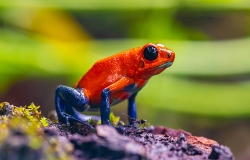
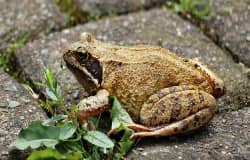
At first glance, the most noticeable difference between frogs and toads lies in the texture of their skin. Frogs, those nimble jumpers often found near ponds or rivers, boast smooth and moist skin that glistens in the moonlight. This adaptation not only aids in respiration but also provides a conducive surface for water absorption, a vital aspect of their semi-aquatic lifestyle.
Contrastingly, toads exhibit a drier and bumpier exterior, adorned with distinctive warts that create a textured armor. This dry skin serves a dual purpose: it reduces water loss and acts as a protective layer against potential predators. The bumpy terrain of a toad's skin tells a tale of adaptation to terrestrial habitats, where the ability to conserve moisture becomes a survival advantage.
2- Habitat Harmony: Moist Marshes vs. Terrestrial Trails
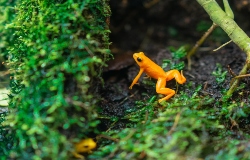
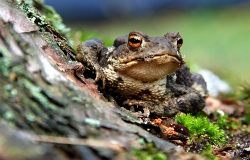
Frogs and toads, while both belonging to the order Anura, showcase distinct preferences when it comes to their habitats. Frogs are often associated with the lush greenery of moist environments, where the symphony of their croaks harmonizes with the rippling sounds of nearby water bodies. Their semi-aquatic lifestyle is intricately tied to the availability of water for breeding and the abundance of insects for sustenance.
In contrast, toads display a remarkable adaptability to terrestrial environments, making them more versatile in their choice of habitats. From dry woodlands to arid deserts, toads traverse terrestrial trails with a deliberate hop or walk, showcasing a resilience that allows them to thrive beyond the confines of aquatic landscapes.
3- Legends of Leaping: Frogs' Agile Jumps vs. Toads' Grounded Steps
If we were to crown a champion in the realm of jumping, frogs would undoubtedly take the title. Equipped with elongated hind legs, frogs are the acrobats of the amphibian world, capable of remarkable jumps that propel them through the air. These powerful hind limbs not only aid in locomotion but also contribute to their skillful evasion of predators and efficient pursuit of prey.
Toads, however, adopt a more grounded approach to movement. Their hind legs, while still functional for hopping, are shorter in comparison to those of frogs. This adaptation reflects a different strategy in their quest for survival, emphasizing a steady and deliberate pace over the extravagant leaps favored by their “froggy” counterparts.
4- Mating Ballets: Egg-Laying Styles and Melodious Trills
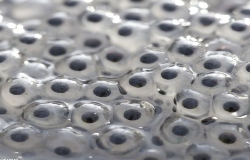
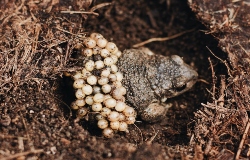
The reproductive tales of frogs and toads unveil further distinctions in their behaviors. Frogs typically lay their eggs in clusters or masses, creating gelatinous orbs that float on the water's surface. The communal nature of these egg masses is a spectacle of reproductive coordination, allowing the aquatic larvae to hatch in unison.
Toads, on the other hand, prefer a more elongated approach to egg-laying. Their eggs are often arranged in long chains, providing a different strategy for ensuring the survival of their offspring. This methodical placement of eggs may also serve as a protective measure, reducing the likelihood of predation.
Additionally, the love songs of these amphibians vary in tone and purpose. Frogs usually make a ribbit or croak, not just as a sign of their romantic feelings but also as a mating call that echoes across the water. On the flip side, toads add to the nighttime melody with a more melodious trill or chirping sound, crafting a serenade that echoes through land-based landscapes.
5- Survival Arsenal: Toxicity, Adaptation, and Metabolic Mastery
The arsenal for survival varies between frogs and toads, with each wielding unique weapons in the battle for existence. Frogs, especially those adorned in vibrant hues, may carry a toxic payload, using their striking colors as a warning to potential predators. The toxicity is often concentrated in their skin, creating a defense mechanism that discourages would-be attackers.
Toads, while also capable of producing toxins, often carry these chemical defenses in glands located behind their eyes. The distinctive bumps on a toad's skin might serve as both a visual deterrent and a physical barrier against predators, reinforcing the notion that these creatures are not to be trifled with.
Metabolically, frogs tend to have a higher metabolic rate, reflecting their energetic lifestyle and need for rapid movements. Toads, with their slower and more deliberate pace, have adapted to a lower metabolic rate, conserving energy for the long haul.
6- Winter Whispers: Active Frogs and Dormant Toads
As the cold blankets the landscape in frost, the behavior of frogs and toads in winter takes divergent paths. While many frogs continue to remain active beneath the ice, foraging for food and adapting to the challenges of the season, toads often enter a state of dormancy known as hibernation.
The moist, semi-aquatic nature of frogs allows them to persist in a dynamic state during winter, whereas toads, with their terrestrial tendencies, opt for a more sedentary strategy to conserve energy in the face of frigid temperatures.
7- Eyes: Gazing Into Amphibian Realms
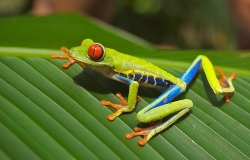
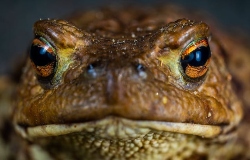
Their eyes gazing into amphibian realms also reveal distinguishing features between frogs and toads. Frogs typically boast bulging, protruding eyes that provide a panoramic view of their surroundings. These prominent eyes contribute to their keen awareness and ability to detect movement, crucial for both hunting and evading predators.
Toads, in contrast, often have eyes that are more recessed into their heads. This anatomical difference may be an adaptation to their terrestrial lifestyle, providing a level of protection for their eyes while navigating through varied landscapes.
8- Lifespan Chronicles: The Amphibian Odyssey
In the grand saga of life, frogs and toads scribe their chapters with varying lifespans. On average, frogs may live anywhere from 3 to 12 years, and their existence is often influenced by factors such as species, habitat, and environmental conditions. Toads, resilient wanderers of terrestrial realms, can surpass 30 years in captivity, a testament to their adaptability and the care they receive in controlled environments.
Conservation Considerations: Preserving the Croaks and Hops
As we marvel at the diversity of frogs and toads, it becomes imperative to consider the conservation implications of their unique characteristics. The vulnerability of some species to habitat loss, pollution, and disease underscores the need for comprehensive conservation efforts. Preserving the environments they inhabit, both aquatic and terrestrial, ensures that the ribbits and croaks echo through our landscapes for generations to come.
Read More: